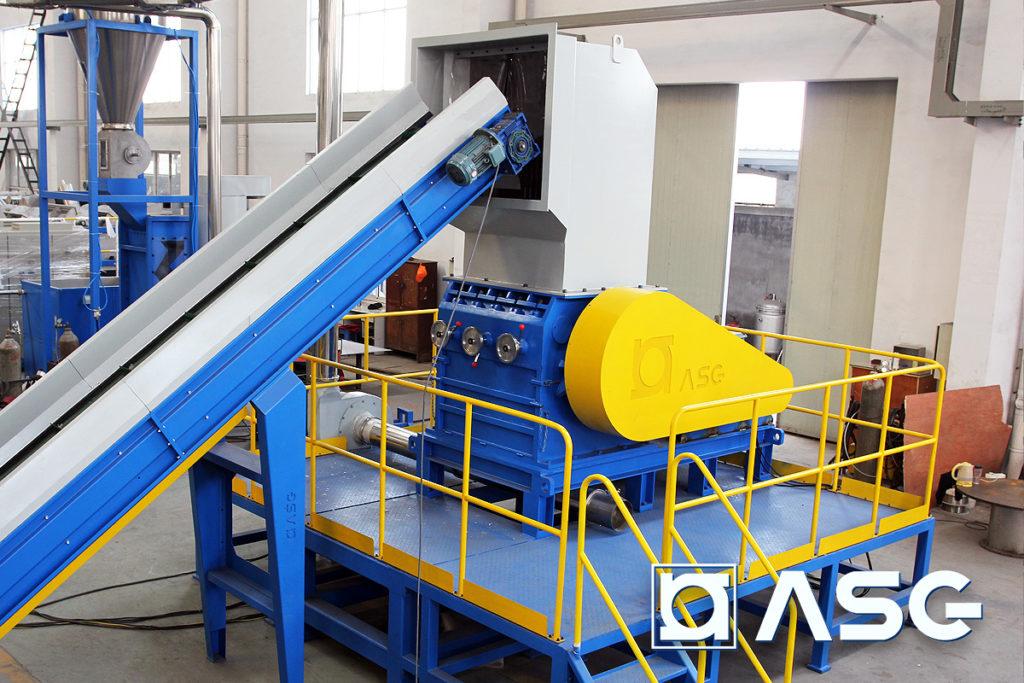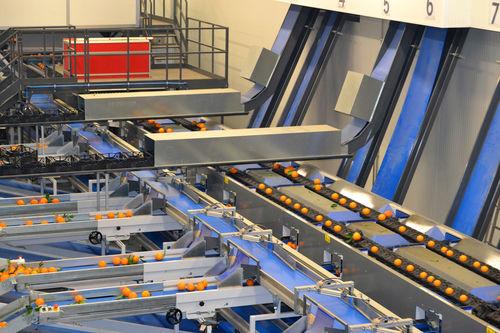In the bustling world of manufacturing and processing, where efficiency reigns supreme and every minute counts, the hidden culprits of production delays often lurk in the shadows: downtime.For industries relying on granulators and sorting equipment, understanding the nuances of downtime analysis is essential to optimizing performance and maintaining a competitive edge. This article delves into the critical aspects of downtime analysis, illuminating its importance in enhancing operational flow and identifying bottlenecks. By harnessing data-driven insights, manufacturers can transform idle moments into moments of opportunity, ensuring that every piece of equipment not only functions but thrives in a synchronized symphony of productivity. Join us as we explore the intricacies of downtime analysis, unravel its potential rewards, and equip you with the tools to elevate your operations to new heights.
Exploring the Impact of Downtime on Granulator Efficiency
understanding the impact of downtime is critical for optimizing granulator performance. When granulators experience unplanned interruptions, several factors contribute to decreased efficiency. Productivity loss is a primary concern; each minute of downtime translates directly into reduced throughput. Additionally, prolonged periods offline can lead to a backlog in production schedules, exacerbating pressure on supply chains and increasing operational costs. Furthermore, the maintenance implications of frequent downtimes can strain resources and effect the overall lifespan of the equipment.
It’s notable to assess which aspects of granulator operations are most affected by downtime. Key metrics include:
- Cycle Times: Longer cycle times can lead to inadequate processing per hour.
- Material Waste: Interruptions may cause increased waste, as materials can be rendered unusable.
- Labor Costs: Higher personnel costs are incurred when operators are idle due to equipment failure.
| Downtime Reason | Effect on Efficiency |
|---|---|
| Mechanical Failure | Significant production halts |
| Power Outages | Increased cycle times |
| Operator Error | Higher waste generation |
Identifying Common Causes of Downtime in Sorting Equipment
downtime in sorting equipment can have a significant impact on productivity and operational efficiency. Identifying the root causes of this downtime is crucial for minimizing disruptions. some common culprits include:
- Mechanical Failures: Wear and tear on components can lead to unexpected equipment failures, resulting in unplanned stoppages.
- Operator Errors: Inadequate training or miscommunication among staff can cause sorting errors,prompting the need for adjustments or repairs.
- Lack of Maintenance: Regular maintenance is vital; neglecting it can lead to serious malfunctions during operations.
- Electrical Issues: Faulty wiring or power supply problems can disrupt the sorting process, requiring an immediate response.
Another factor contributing to downtime is the variability in material input. Fluctuations in the characteristics of the materials being sorted can cause blockages and inefficient operation. Consider the following aspects:
| Aspect | Impact on Downtime |
|---|---|
| Material Composition | Variations can lead to inconsistent sorting efficiency. |
| Moisture Content | excess moisture can clog equipment and require frequent cleaning. |
| Size Variability | Uneven sizes can disrupt flow and cause jams. |
Strategies for Enhancing Uptime Through Predictive Maintenance
To considerably enhance uptime for granulators and sorting equipment,implementing a predictive maintenance program is essential. This approach harnesses data analytics and machine learning algorithms to anticipate failures before they occur. key components of this strategy include:
- Real-time Monitoring: Utilize sensors to collect data on vibrations, temperature, and performance metrics.
- Data Analysis: Analyze past performance data to identify patterns and anomalies that can signal potential issues.
- Scheduled Maintenance: Shift from reactive to scheduled maintenance based on predictive insights derived from data analysis.
Additionally, fostering a culture that prioritizes proactive measures can lead to remarkable improvements. Ensuring that operators are educated about the equipment and trained in recognizing early warning signs is crucial.Incorporating the following practices will reinforce this culture:
- Regular Training: Conduct workshops to keep staff updated on the latest maintenance technologies and protocols.
- Cross-functional Teams: Form teams that include operators and maintenance personnel to facilitate knowledge sharing and enhance interaction.
- Feedback Loops: Set up systems for operators to report issues and share insights, which can be invaluable in refining predictive models.
Evaluating ROI: The Benefits of Proactive Downtime Analysis
Identifying the root causes of downtime through proactive analysis can significantly enhance operational efficiency. By systematically evaluating and addressing recurring issues, businesses can achieve the following benefits:
- Enhanced Productivity: Reducing the frequency and duration of downtime directly correlates with increased output and streamlined operations.
- Cost Savings: Minimizing unplanned outages leads to lower maintenance and labor costs, resulting in improved profitability.
- Improved Equipment lifespan: Regular analysis helps to preemptively address wear and tear, thereby extending the life of granulators and sorting equipment.
- Better Resource Allocation: Streamlining maintenance schedules based on downtime analysis ensures that resources are utilized more effectively.
Moreover, implementing a robust downtime tracking system lays the groundwork for a data-driven approach to decision-making. This leads to:
| Benefits | Impact on Operations |
|---|---|
| Speedy Response Time | Faster resolution of issues and reduced operational interruptions. |
| data-Driven Insights | Informed decisions leading to strategic improvements and innovations. |
| Increased Employee Morale | Less frustration from unexpected breakdowns enhances workplace satisfaction. |
To Conclude
In the intricate world of manufacturing and material processing, the efficiency of operations hinges upon the optimal performance of granulators and sorting equipment. As we’ve explored throughout this article, a meticulous downtime analysis unveils the hidden inefficiencies and potential pitfalls within these critical machines. By understanding the factors contributing to downtime—be it mechanical failures, maintenance delays, or operational missteps—manufacturers can transform these challenges into opportunities for betterment.
As you close the chapter on this analysis, take with you not just a deeper comprehension of the complexities involved but also a renewed perspective on the importance of proactive measures. Whether you are looking to streamline maintenance schedules or invest in predictive technologies,the goal remains clear: to minimize downtime and maximize productivity. embracing a culture of continuous improvement could very well be the key to unlocking the full potential of your granulators and sorting equipment.
With each moment saved, you pave the way for greater efficiency, reduced costs, and ultimately, enhanced profitability. The journey toward operational excellence is ongoing, but with a keen focus on downtime analysis, you are one step closer to turning your machinery into a seamless extension of your production goals. Let this not be an end, but a beginning of thoughtful strategies and innovative solutions that redefine how we perceive and manage downtime in our industries.





















